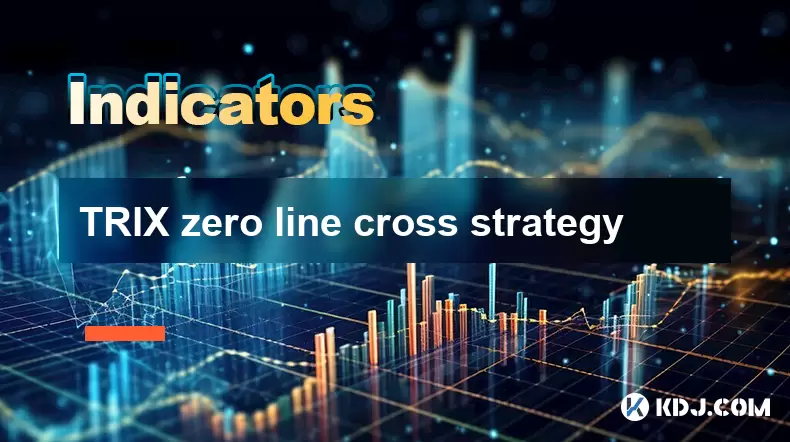-
 Bitcoin
Bitcoin $117400
-0.46% -
 Ethereum
Ethereum $3768
0.60% -
 XRP
XRP $3.551
2.09% -
 Tether USDt
Tether USDt $1.000
0.00% -
 Solana
Solana $203.2
11.30% -
 BNB
BNB $770.9
1.92% -
 USDC
USDC $0.9999
0.01% -
 Dogecoin
Dogecoin $0.2709
-0.02% -
 Cardano
Cardano $0.9024
4.49% -
 TRON
TRON $0.3139
0.60% -
 Hyperliquid
Hyperliquid $45.60
-1.41% -
 Stellar
Stellar $0.4730
-1.34% -
 Sui
Sui $4.025
2.15% -
 Chainlink
Chainlink $19.79
2.19% -
 Hedera
Hedera $0.2724
-2.39% -
 Avalanche
Avalanche $25.93
3.05% -
 Bitcoin Cash
Bitcoin Cash $524.0
-1.83% -
 Shiba Inu
Shiba Inu $0.00001558
0.50% -
 Litecoin
Litecoin $116.7
-0.30% -
 UNUS SED LEO
UNUS SED LEO $8.996
0.00% -
 Toncoin
Toncoin $3.334
1.83% -
 Polkadot
Polkadot $4.506
0.34% -
 Uniswap
Uniswap $10.99
4.83% -
 Ethena USDe
Ethena USDe $1.001
0.03% -
 Pepe
Pepe $0.00001461
3.17% -
 Monero
Monero $320.3
-1.01% -
 Bitget Token
Bitget Token $4.935
0.36% -
 Dai
Dai $0.9998
0.00% -
 Aave
Aave $322.4
-1.25% -
 Bittensor
Bittensor $455.6
9.33%
TRIX zero line cross strategy
The TRIX zero line cross strategy helps traders identify momentum shifts in crypto markets by tracking when the TRIX indicator crosses above or below zero, signaling potential bullish or bearish trends.
Jul 12, 2025 at 11:07 am

What is the TRIX Zero Line Cross Strategy?
The TRIX (Triple Exponential Average) indicator is a momentum oscillator used in technical analysis to identify overbought and oversold conditions, as well as potential trend reversals. The zero line cross strategy focuses on identifying when the TRIX line crosses above or below the zero level. When this happens, it can signal a shift in momentum from bearish to bullish or vice versa.
In cryptocurrency trading, where volatility is high and trends can change rapidly, the TRIX zero line cross strategy provides traders with actionable signals. This approach is especially favored by those who rely on momentum-based trading systems.
How Does the TRIX Indicator Work?
The TRIX indicator is calculated using a triple exponential moving average of price data, which helps filter out market noise and false signals. It oscillates around a zero line and typically appears as a single line charted beneath the main price chart.
- When the TRIX crosses above the zero line, it suggests that momentum is turning positive.
- Conversely, when the TRIX crosses below the zero line, it indicates negative momentum.
These crossings are not only momentum confirmations but also potential entry or exit points for trades. Traders often combine this with other indicators like volume or support/resistance levels to increase accuracy.
Setting Up the TRIX Indicator on Trading Platforms
To implement the TRIX zero line cross strategy, you must first configure the TRIX indicator on your preferred trading platform. Here's how to do it step-by-step:
- Open your chosen trading platform such as TradingView, Binance, or MetaTrader.
- Navigate to the indicators section and search for "TRIX".
- Select the indicator and apply it to the chart.
- Adjust the default settings if needed; most platforms use a 14-period setting, but some traders prefer shorter periods like 9 or longer ones like 20 depending on their strategy.
- Ensure the zero line is visible on the indicator panel for easy reference.
Once applied, observe how the TRIX line behaves relative to the zero line during different market conditions. This observation will help you understand how the indicator reacts before actual trading begins.
Interpreting TRIX Zero Line Cross Signals
Interpreting the TRIX zero line cross requires attention to both the direction of the cross and the surrounding price action. A bullish signal occurs when the TRIX line moves from negative territory to above zero. This suggests that upward momentum is gaining strength. Conversely, a bearish signal occurs when the TRIX line falls from positive to negative values, signaling weakening momentum and a possible downtrend.
However, it's crucial to consider the broader context. For example, a TRIX zero line cross during a strong uptrend may be less reliable than one occurring after a prolonged consolidation period. Also, false signals can occur in sideways markets, so confirming with additional tools like moving averages or volume indicators can enhance reliability.
Applying the TRIX Zero Line Cross Strategy in Cryptocurrency Trading
When applying the TRIX zero line cross strategy to cryptocurrency trading, several factors come into play due to the high volatility and 24/7 nature of crypto markets. Here’s how to effectively integrate this strategy:
- Use higher timeframes like 1-hour or 4-hour charts to reduce noise and capture stronger trends.
- Look for confluence with key support and resistance zones to validate the signal.
- Consider combining the TRIX with a volatility filter, such as Bollinger Bands or ATR, to avoid entering trades during choppy price movements.
- Set stop-loss orders just below recent swing lows (for long entries) or above swing highs (for short entries) to manage risk.
- Take profits either at predetermined targets or trail them using a dynamic stop mechanism.
By aligning these elements with the TRIX zero line cross, traders can improve their chances of capturing favorable moves while limiting exposure to sudden reversals.
Risk Management Considerations
Even with a solid strategy like the TRIX zero line cross, effective risk management is essential. One common mistake among novice traders is ignoring position sizing and overleveraging. To mitigate risks:
- Always calculate your position size based on your account size and the distance to your stop-loss.
- Limit individual trade risk to 1%–2% of your total capital to preserve capital over time.
- Avoid trading solely based on a single indicator signal without confirmation from other sources.
- Keep track of your trades in a trading journal to analyze performance and refine your approach.
These practices ensure that even if a few trades go against you, your overall portfolio remains intact and ready for the next opportunity.
Frequently Asked Questions (FAQ)
Q: Can the TRIX zero line cross strategy be used on all cryptocurrencies?
A: Yes, the TRIX zero line cross strategy is applicable across various cryptocurrencies, including major ones like Bitcoin, Ethereum, and altcoins. However, its effectiveness may vary depending on the asset's liquidity and volatility.
Q: Should I use TRIX alone or with other indicators?
A: While the TRIX zero line cross can be used independently, combining it with complementary tools like volume indicators, moving averages, or RSI can improve the quality of signals and reduce false entries.
Q: How sensitive is the TRIX indicator to different settings?
A: The sensitivity of the TRIX indicator increases with shorter lookback periods. A 9-period TRIX will generate more signals but may also produce more noise, whereas a 20-period TRIX offers smoother readings but with fewer signals.
Q: Is the TRIX zero line cross suitable for scalping?
A: The TRIX zero line cross strategy is generally more effective for swing trading or intraday trading rather than ultra-short-term scalping due to its lagging nature. Scalpers might find faster-reacting indicators more suitable.
Disclaimer:info@kdj.com
The information provided is not trading advice. kdj.com does not assume any responsibility for any investments made based on the information provided in this article. Cryptocurrencies are highly volatile and it is highly recommended that you invest with caution after thorough research!
If you believe that the content used on this website infringes your copyright, please contact us immediately (info@kdj.com) and we will delete it promptly.
- XRP, Bitcoin, Ripplecoin: Navigating the Crypto Landscape in 2025
- 2025-07-22 20:30:13
- Cardano Ecosystem Watch: Can PayFi Token Remittix Trigger an ADA Overtake?
- 2025-07-22 20:50:13
- JasmyCoin Price Forecast: Chart Analysis Points to Potential Surge
- 2025-07-22 20:55:13
- Remittix, XRP, and Dogecoin: What's Hot in the Crypto Game Right Now?
- 2025-07-22 20:10:14
- BlockchainFX, PEPE, and USDT: What's the Buzz in the Crypto Jungle?
- 2025-07-22 18:50:12
- Ripple's RLUSD: Institutional Backing Fuels Stablecoin Ascent
- 2025-07-22 18:30:12
Related knowledge

Advanced RSI strategies for crypto
Jul 13,2025 at 11:01am
Understanding the Basics of RSI in Cryptocurrency TradingThe Relative Strength Index (RSI) is a momentum oscillator used to measure the speed and chan...

Crypto RSI for day trading
Jul 12,2025 at 11:14am
Understanding RSI in the Context of Cryptocurrency TradingThe Relative Strength Index (RSI) is a momentum oscillator used to measure the speed and cha...

Crypto RSI for scalping
Jul 12,2025 at 11:00pm
Understanding RSI in the Context of Crypto TradingThe Relative Strength Index (RSI) is a momentum oscillator widely used by traders to measure the spe...

What does an RSI of 30 mean in crypto
Jul 15,2025 at 07:07pm
Understanding RSI in Cryptocurrency TradingRelative Strength Index (RSI) is a momentum oscillator widely used in cryptocurrency trading to measure the...

What does an RSI of 70 mean in crypto
Jul 13,2025 at 06:07pm
Understanding the RSI Indicator in Cryptocurrency TradingThe Relative Strength Index (RSI) is a widely used technical analysis tool that helps traders...

Does RSI work in a bear market for crypto
Jul 16,2025 at 01:36pm
Understanding RSI in Cryptocurrency TradingThe Relative Strength Index (RSI) is a momentum oscillator used by traders to measure the speed and change ...

Advanced RSI strategies for crypto
Jul 13,2025 at 11:01am
Understanding the Basics of RSI in Cryptocurrency TradingThe Relative Strength Index (RSI) is a momentum oscillator used to measure the speed and chan...

Crypto RSI for day trading
Jul 12,2025 at 11:14am
Understanding RSI in the Context of Cryptocurrency TradingThe Relative Strength Index (RSI) is a momentum oscillator used to measure the speed and cha...

Crypto RSI for scalping
Jul 12,2025 at 11:00pm
Understanding RSI in the Context of Crypto TradingThe Relative Strength Index (RSI) is a momentum oscillator widely used by traders to measure the spe...

What does an RSI of 30 mean in crypto
Jul 15,2025 at 07:07pm
Understanding RSI in Cryptocurrency TradingRelative Strength Index (RSI) is a momentum oscillator widely used in cryptocurrency trading to measure the...

What does an RSI of 70 mean in crypto
Jul 13,2025 at 06:07pm
Understanding the RSI Indicator in Cryptocurrency TradingThe Relative Strength Index (RSI) is a widely used technical analysis tool that helps traders...

Does RSI work in a bear market for crypto
Jul 16,2025 at 01:36pm
Understanding RSI in Cryptocurrency TradingThe Relative Strength Index (RSI) is a momentum oscillator used by traders to measure the speed and change ...
See all articles

























































































